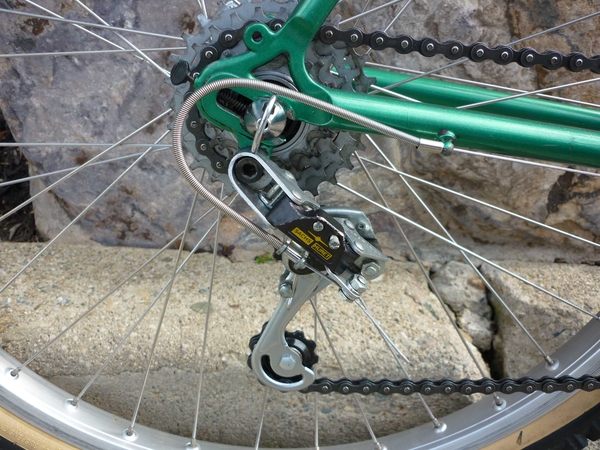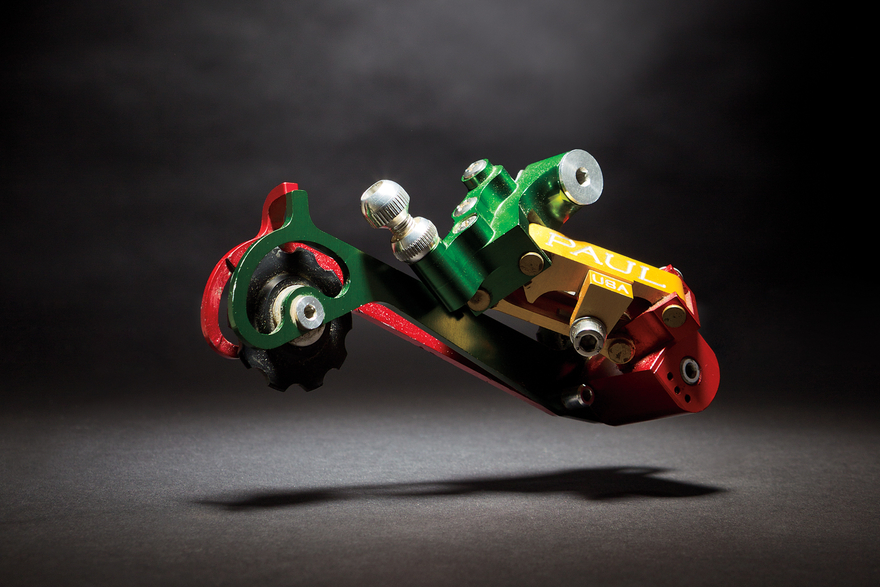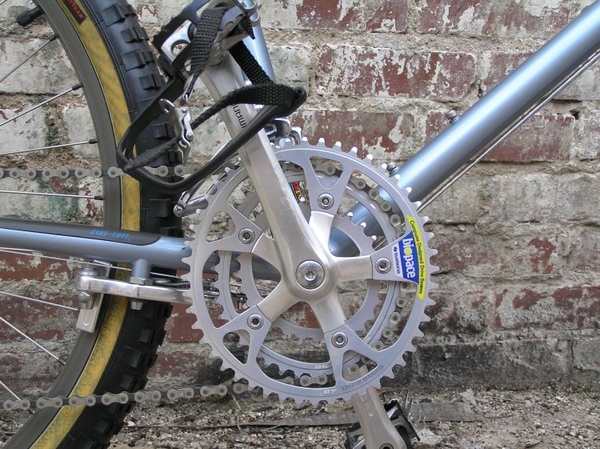This is an old revision of the document!
—
Mountain Bike Components
Dating Mountain Bikes by their Components
The idea here (in progress!) is to have a visual map of all mountain bike components available by type, manufacturer & year.
Too often date attributions are missing, misleading, or have deliberate misinformation. Compochronology1) allows for a more confident provenance by bracketing possible dates by component manufacture dates. Component dating can disprove claims that bikes are all original and add confidence when everything seems period correct.
Similar timelines have been attempted elsewhere:
- mombat : simple text, no pics or links
- velobase : comprehensive - but too much info to make a visual timeline. mtbtimeline will rely upon velobase when it can. Velobase is very road bike centric and is missing most mountain components.
- vintage-trek : dating by code. Good idea. Many sites give serial number decoders, which is vital. Should be sed in addition to this visual component timeline.
- disraeligears : Rear derailleurs only. A nice example of how to make components visually cool.
- mombat SunTour museum: all the pics and links are dead.
Dating Rear Derailleurs
Other than dating headsets and bottom brackets (because they're harder to swap,) dating the rear derailleur is a reliable method to date a bike, as they're very visible and come in a huge array of date limited shapes.

A Sachs Huret Duopar Eco on a
1981 Ritchey Everest
The Ritchey Project
Available in 1981: check. Note that the velobase entry isn't an exact match and its dates are unsure.
Looking at other 1981 Ritcheys shows the same or similar specs. Or, looking at other sites such as disraeligears confirms that these were available in 1981.
Chain Wrap Capacity
Mountain bikes need wide gearing to ride both up and down hill. The rear derailleur capacity limits the range of gears and the
sizes of the freewheel and crankset.
For example, with SunTour MounTech, the first mountain specific component group, the derailleur had a 34 tooth capacity. Pairing this with a SunTour Winner 14-32 freewheel implies that the chainrings can't exceed a 16 tooth difference, such as a 30-46 double. Try and use an older SunTour Cyclone (24T) then the bike would cease to be a mountain bike at all.
Today (2021), touring derailleurs have the greatest capacity and mountain derailleurs often have less than 1980's derailleurs.
This page should only list derailleurs commonly spec'd on early mountain bikes or related derailleurs with lots of capacity.
Timeline Date Skew
This timeline jumps two years, to be from 1978→1987. The earliest mountain bikes are so rare that dating them by components is a non-issue. When dating a 1985 bike it's helpful to have 1986 and 1987 components on the timeline. Some pre-1978 components used:
- 1977 Breezer #1: SunTour Cyclone rear, SunTour VX front, TA cranks.
- 1978 CCPROTO: Shimano DuraAce rear, no front, DuraAce cranks
- 1978 Lawwill-Knight Pro Cruiser: Shimano 600 EX GS rear, Suntour Vx front, SR Apex cranks

1995 Paul Powerglide
bikemag
By the 1990s mountain bikes had established total dominance of the cycling world. Bike shops once sold 20 mountain bikes for each road bike that went out the door. And this dominance exposed an existential problem – mountain biking was fiercely Californian, forged in the furnace of individuality and exceptionalism that characterises that state – but the hardtail bikes of the time were astoundingly similar to each other. And without exception they were clothed in a near identical suit of Shimano components. Rockshox, Shimano Deore XT and a 7000 series aluminium frame – where’s the individuality and exceptionalism in that?
Enter the Paul Powerglide, the definitive US made bike-porn derailleur of the mid 1990s. It looked amazing: the colours, the CNC geometric shapes, the detailing around the adjustable cable outer stop and the adjustment screws – all of this was like water in the desert for mountain bike aficionados drowning in a sea of lookalike Shimano. The Guardian, 7 June, 2018
Cranksets
Even more visible than derailleurs, cranksets have lots of branding real estate.
 Biopace?!? on a 1985 Ritchey Annapurna mombat
Biopace?!? on a 1985 Ritchey Annapurna mombat
Biopace first showed up in 1984 on road gruppos only. It wasn't until 1986 that biopace infected mountain chainrings in the Deore XT group set. However, Ritchey used the road 600EX crankset, back when such things were compatible 2) So, the biopace is period correct. The chainstay mounted u-brakes, however, are very avant-garde for 1985 3). However, there is precedent for Annapurnas to use these: Ritchey DB. So again, period correct.
 1981 Campagnolo Nuovo Record disraeligears
1981 Campagnolo Nuovo Record disraeligears
Why is Campagnolo missing from the table?
Before 1990, Campagnolo was not interested in anything other than racing bikes racing on flat roads. Many Campy derailleur were fitted to early mountan bikes - briefly4) - before being swapped with derailleurs that had practical gearing and durability.
The parallelogram geometry is not optimised for gear changing - Campagnolo was never overly interested in the idea of ‘chain gap’. The Nuovo Record does not like low gears. disraeligears
